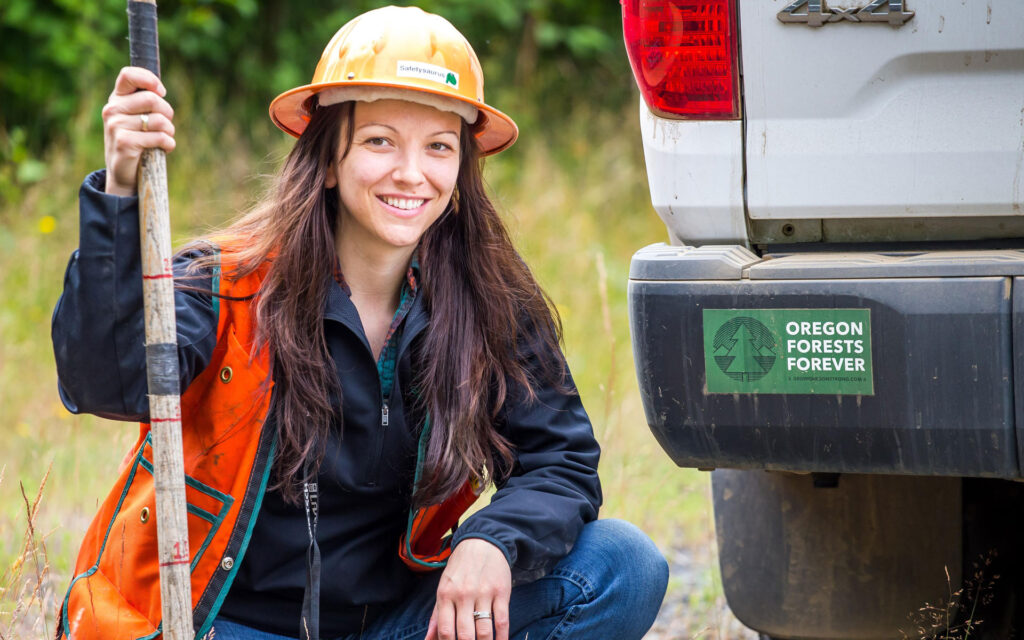
Work. Play. Renew.
Ask a forester: Does Oregon only replant Douglas-fir?

Oregon’s forests are rich with diversity. Across the state there are 30 native coniferous species and 37 native species of broadleaf trees. However, when trees are replanted in Oregon, are they still as diverse as they were before? To answer that question we asked GreenWood Resources forester Kat Olson.
Q: Does Oregon only replant monocrop Douglas-fir forests?
A: From a distance, it may look like our forests are all one species, but if you look closely, they definitely are not! Tree species and seed sources are selected by region based on where they are best suited ecologically.
Foresters take into account many factors when choosing a tree species for a given region or site to replant. This includes local factors like topography, elevation and weather influences and regional factors such as seed zones and historical species distributions. Seed zone maps are used just like you might utilize when planning your vegetable or flower garden to ensure that trees are not moved outside their native ranges.
Douglas-fir thrives in and around the Willamette Valley, often making it the primary species for reforestation in that region. Coastal forests, like the one I work on, are often replanted with a mix of hemlock, spruce, Douglas-fir etc. In fact, the coastal reforestation program I manage includes five different native conifer species which are mixed together in a variety of ways depending on the site.
East of the Cascades you will likely find mixed plantings of pines, Douglas-fir, true firs and cedars. Foresters recognize the importance of maintaining species diversity and choosing trees that will best fit with the natural characteristics of each site.
Meet Kat Olson and her husband and learn about their careers working in and around Oregon’s forests.
Submit your question for our ‘Ask a forester’ series or lend your expertise for the community!
Oops! We could not locate your form.